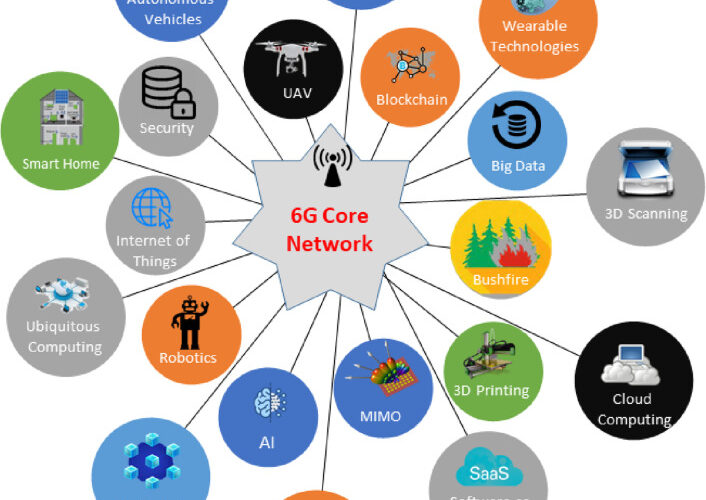#DelhiDeclaration #Bharat6G #6GInnovation #GlobalConnectivity #6GByDesign #DigitalTransformation #NextGenNetworks #TrustedTechnology #Secure6G #InclusiveConnectivity #AffordableInternet #SustainableTech #AIinTelecom #OpenStandards #Interoperability #SmartNetworks
New Delhi – In a landmark display of global technological unity, leading 6G research and industry alliances have issued a Joint Statement, dubbed the ‘Delhi Declaration,’ committing to shape the future of 6G as a “global public good.” The announcement came during the International Bharat6G Symposium 2025, held alongside the India Mobile Congress 2025 in New Delhi.
The initiative brings together major players including Bharat 6G, 6G Smart Networks and Services Industry Association (6G-IA), ATIS’ Next G Alliance, 6G Flagship, and others, to ensure the next generation of wireless connectivity empowers every nation and citizen through accessible and affordable services.
Six Pillars of 6G by Design
The declaration endorsed six core guiding principles that will govern the design and deployment of 6G networks globally:
- Trusted and Secure: Network architecture must be trustworthy-by-design, integrating secure ecosystems, advanced risk mitigation, and AI-native safeguards across the entire telecom lifecycle.
- Resilient and Reliable: Central to the design will be resilience engineering and fail-safe architecture to guarantee always-on connectivity for billions of devices and users.
- Open and Interoperable: The partners stressed the need for open, transparent, and inclusive standardization. This promotes open interfaces and multi-vendor interoperability to accelerate innovation and reduce costs.
- Inclusive and Affordable: 6G must actively bridge digital divides, ensuring that connectivity solutions are affordable and leverage economies of scale to reach urban, rural, and remote regions equally.
- Sustainable: Sustainability is positioned at the heart of 6G, calling for energy-efficient, repairable, and recyclable systems to reduce carbon footprints.
- Globally Connected: The vision includes achieving end-to-end global coverage through the integration of terrestrial networks with non-terrestrial systems (satellites, high-altitude platforms), delivering seamless connectivity across land, sea, air, and space.
Focus on AI, Skills, and Standards
Beyond connectivity performance, the joint statement placed heavy emphasis on structural factors critical for global equity:
- Trustworthy AI: The networks will integrate AI-native safeguards and risk mitigation frameworks, acknowledging the critical role of Artificial Intelligence in future network operations.
- Open Competition: The push for open interfaces and multi-vendor interoperability across all hardware and software platforms aims to democratize the vendor ecosystem, allowing smaller and emerging players to compete with established proprietary technologies, thus driving down costs.
- Talent Pipeline: Recognizing the rapidly evolving technological landscape, the alliances committed to skills development and capacity building to advance talent pipelines across hardware, software, and standards necessary to deploy and secure future 6G systems.
The New Delhi declaration is seen as a crucial unified step towards ensuring that the powerful capabilities of 6G—expected to offer speeds up to 1,000 times faster than 5G and near-zero latency—are deployed with a focus on social responsibility rather than solely on commercial gain. It marks a unified global step toward creating a truly universal, trustworthy, and inclusive intelligent network.
Hashtags
#DelhiDeclaration #Bharat6G #6GInnovation #GlobalConnectivity #6GByDesign #DigitalTransformation #NextGenNetworks #TrustedTechnology #Secure6G #InclusiveConnectivity #AffordableInternet #SustainableTech #AIinTelecom #OpenStandards #Interoperability #SmartNetworks #GlobalPartnership #6GEcosystem #TechForAll #DigitalInclusion #FutureOfConnectivity #TelecomInnovation #GreenTechnology #6GLeadership #IndiaMobileCongress

